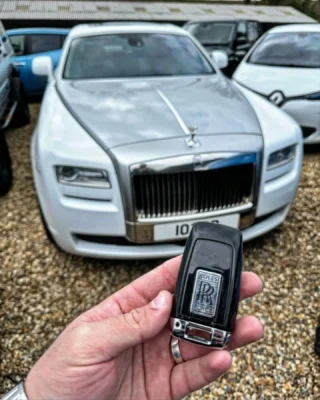What Is Broken Key Repair' History? History Of Broken Key Repair
Broken Key Repair: Solutions for Common Lock Issues
Introduction
Keys are necessary tools in our every day lives, enabling us to secure our homes, vehicles, and personal possessions. However, they can likewise break, resulting in aggravations and troubles. Understanding how to attend to broken key issues is essential for anybody desiring to maintain their locks and make sure access to their home. This short article covers different aspects of broken key repair, including typical causes, repair approaches, and preventive procedures to prevent future circumstances.
Common Causes of Broken Keys
Keys can break for numerous factors. Understanding these causes can assist in avoiding future occurrences:
- Wear and Tear: Over time, keys can wear down due to frequent use, resulting in weakened shafts that are most likely to break.
- Poor Key Design: Keys that are inadequately created might lack structural stability, making them more vulnerable to breaking under tension.
- Inaccurate Key Usage: Using extreme force to turn a key, especially in a jammed lock, can easily result in a damage.
- Ecological Factors: Extreme temperature levels or direct exposure to moisture can compromise metal keys, leading to brittleness.
- Lock Malfunctions: A malfunctioning lock can position excessive stress on a key, triggering it to snap during operation.
Indications of a Broken Key
Determining a broken key typically includes obvious signs. Here are some indications:
- Partial insertion into the lock: If the key can not be completely placed or removed.
- Unexpected resistance: If the key feels stuck when being turned.
- Visible splits or fractures: Inspecting the key can reveal fractures or breaks in the metal.
- Incomplete engagement: The key might turn less than needed to actuate the lock.
Approaches for Broken Key Repair
When faced with a broken key, there are numerous approaches to consider for repair. It is important to choose the ideal one based upon your particular scenario.
1. Get Rid Of the Broken Key
If a key breaks within a lock, the very first action is to remove the broken part:
- Use tweezers or needle-nose pliers: If a piece is standing out of the lock, gently pull it out.
- Insert a key extractor tool: This customized tool can help extract lodged parts more effectively.
Tool
Finest Used For
Tweezers
Shallow extraction
Key extractor tool
Deeply lodged key pieces
Lubricant spray
Alleviating extraction of stuck parts
2. Superglue Method
For circumstances where a key has partially broken however is intact enough to stay grasped, the superglue strategy may provide a momentary fix.
- Tidy the broken surfaces completely.
- Apply a thin layer of superglue.
- Hold the pieces together for a few minutes till the glue sets.
Note: This approach is not a permanent solution and ought to be used with care as the repair can easily stop working under operational stress.
3. Metal Epoxy
For a more robust repair, metal epoxy provides a stronger bond than superglue.
- Follow the instructions on the epoxy packaging for preparing the adhesive.
- Apply to the broken area and hold till set (typically a few hours).
4. Duplicate the Key
In circumstances where lock performance is necessary, developing a duplicate key is typically the finest path:
- Visit a locksmith: Many locksmiths can replicate keys quickly and effectively.
- Use a key-tracing service: Some locksmiths utilize tracing methods to cut a similar key based upon the residues.
5. Lock Replacement
When keys repeatedly break, it may be due to lock problems instead of key stability. In such cases:
- Consult a locksmith to assess the lock's condition.
- Think about changing the lock totally if substantial damage or wear appears.
Preventing Key Breakage
Preventing key breakage is frequently better than repair. Here are some useful pointers:
- Limit force on keys: Always turn keys carefully to prevent unneeded tension.
- Routine key evaluation: Check for wear and change keys revealing indications of damage.
- Use a keychain: Prevent excessive bending by utilizing a sturdy keychain.
- Oil locks: Ensure locks operate efficiently to decrease pressure on keys.
- Shop keys properly: Avoid placing type in environments that can trigger rust or deterioration.
Frequently Asked Questions About Broken Key Repair
1. Can I repair a broken key myself?
Yes, you can try to repair a broken key yourself utilizing methods like the superglue or metal epoxy strategies. However, these are short-term repairs, and it is recommended to speak with an expert locksmith for a more long lasting option.
2. Is it worth repairing a broken key?
Sometimes, specifically with nostalgic or special keys, a repair may deserve it. For basic keys, replication or replacement is generally more reliable and reliable.
3. How can I avoid my keys from breaking?
To avoid damage, guarantee that keys are exempt to extreme force, routinely check them for wear, and keep locks properly maintained.
4. When should I seek a locksmith's assistance?
If you are unable to remove a broken key from a lock or if the lock breakdowns often, it's finest to look for a locksmith's expertise.
Broken keys can provide a significant hassle, however they are manageable with the ideal method. By understanding the typical causes and readily available repair approaches, individuals can react effectively to key breakage. Drawing from car key blade replacement will also help preserve key stability and functionality. Eventually, a proactive method to key and lock upkeep can considerably reduce the frequency of these frustrating issues.
